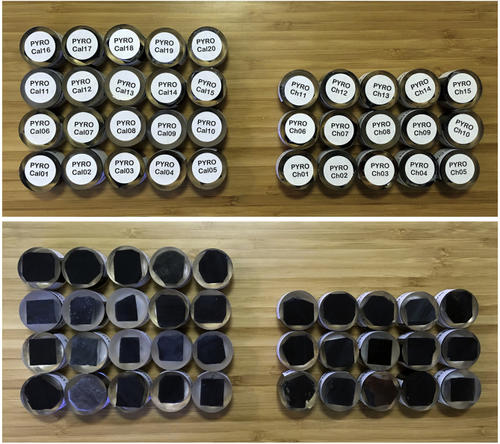
A series of well-characterized specimens, known as the Peabody-Yale Reference Obsidians (PYRO) sets, has been designed to aid with calibrating and assessing X-ray fluorescence analysis (XRF) data, including portable XRF (pXRF) measurements, for obsidian sourcing. Each of these ten matched sets consists of 35 specimens: 20 specimens for calibration and 15 specimens for evaluation. These sets include not only obsidians with common geochemical compositions (i.e., alkaline rhyolites) but also rarer ones (i.e., peralkaline rhyolitic, trachytic, and andesitic specimens, including East African Rift obsidians). When used as described, the PYRO sets are suitable to calibrate and evaluate XRF data for obsidians worldwide. A set can be borrowed following loan policies of the Peabody Museum of Natural History, which will also accession a set. Publishing all source information – from their names and GPS coordinates to the datasets used for the recommended values – not only allows the sets to be replicated by others but also fulfills the demands of scientific transparency. Their main purpose is facilitating collaborations and “big data” projects, and the PYRO sets were designed to complement existing protocols for calibration and evaluation. In short, the sets are intended as a tool for almost anyone (e.g., a student who borrows an instrument to source artifacts) to meet – and even exceed – experts’ practices involving transparency, accuracy, and reproducibility.